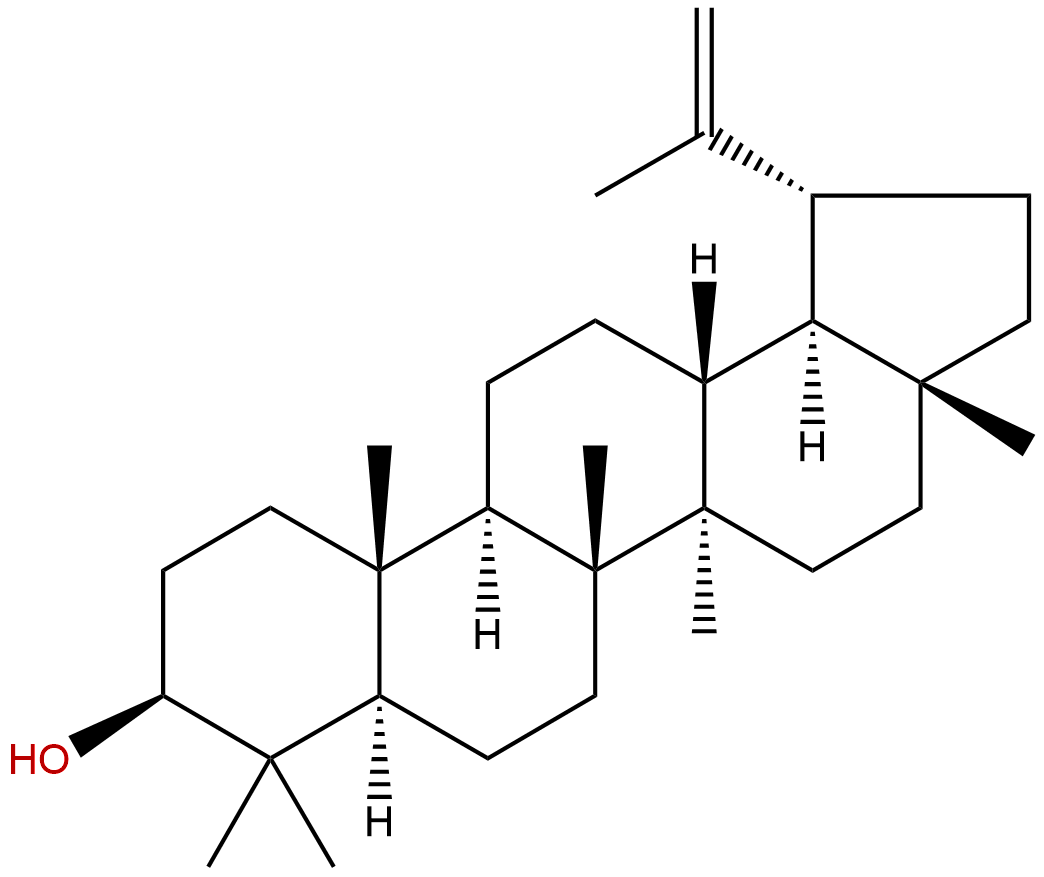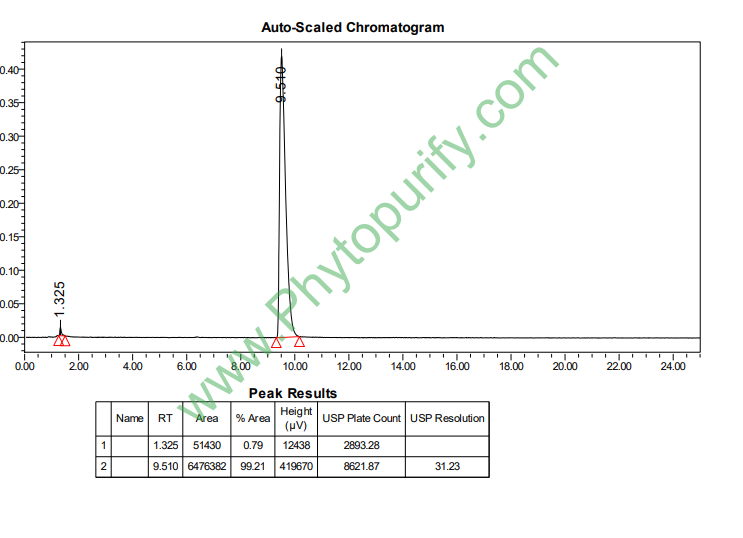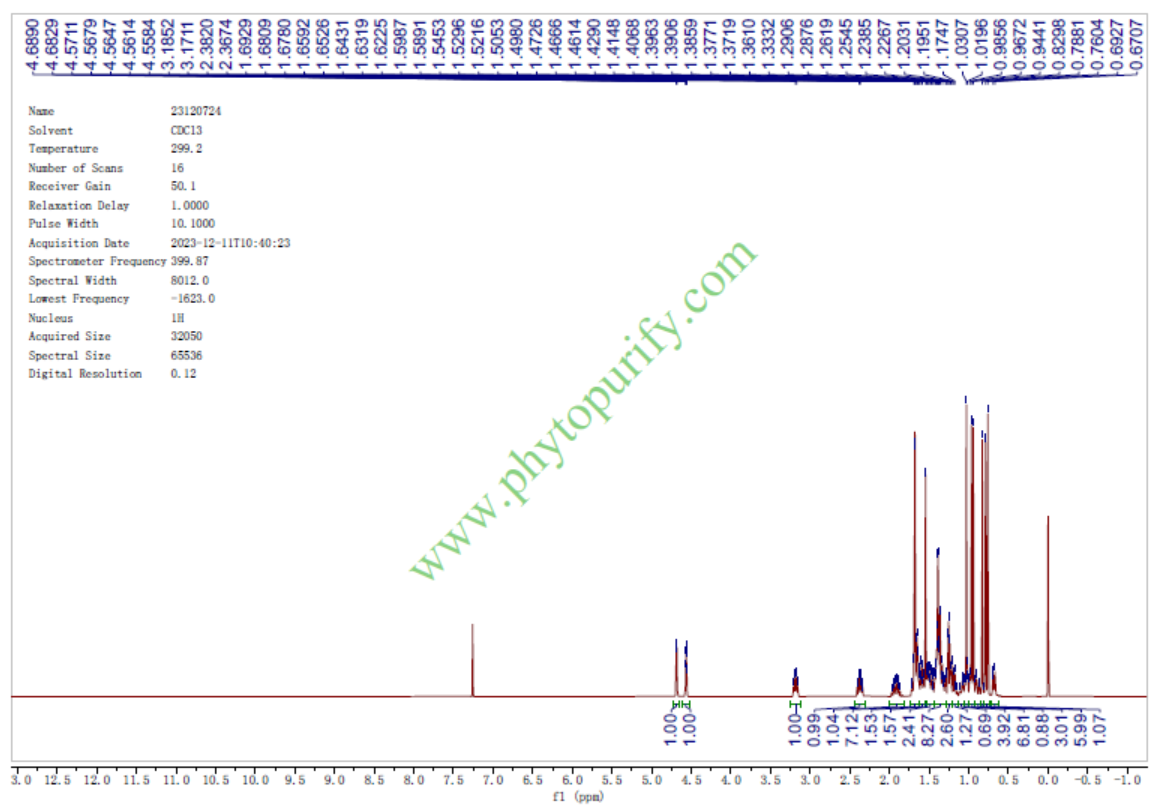
LupeolCAS No.:545-47-1
|
||||||||||
 |
|
|
||||||||

| Catalogue No.: | BP0893 |
| Formula: | C30H50O |
| Mol Weight: | 426.729 |
Product name: Lupeol
Synonym name: Monogynol B; Fagarasterol; β-Viscol; Cautchicol; Xanthosterin; Clerodol
Catalogue No.: BP0893
Cas No.: 545-47-1
Formula: C30H50O
Mol Weight: 426.729
Botanical Source: Ilex cornuta Lindl.ex Paxt.
Physical Description:
Type of Compound: Triterpenoids
Purity: 95%~99%
Analysis Method: HPLC-DAD or/and HPLC-ELSD
Identification Method: Mass, NMR
Packing: Brown vial or HDPE plastic bottle
Storage: Store in a well closed container, protected from air and light. Put into refrigerate or freeze for long term storage.
The product could be supplied from milligrams to grams
Inquire for bulk scale.
Description:
Lupeol has a potential to act as an anti-inflammatory, anti-microbial, anti-protozoal, anti-proliferative, anti-invasive, anti-angiogenic, antimalarial and cholesterol lowering agent.
2. Lupeol prevents acetaminophen-induced in vivo hepatotoxicity by altering the Bax/Bcl-2 and oxidative stress-mediated mitochondrial signaling cascade.
3. Lupeol and its ester derivative have beneficial effects on hypercholesterolemia-induced oxidative and inflammatory stresses.
4. Lupeol significantly enhances the radiosensitivity of SMMC-7721 cells in vitro and in vivo.
5. Lupeol shows antidiabetic and antioxidant potential in experimental hyperglycaemia.
6. Lupeol has potential anticancer effect against hepatocellular and pancreatic cancer, by inhibiting cell proliferation, inducing apoptosis and blocking Akt/PI3K and Wnt signaling pathway.
7. Lupeol has antiangiogenic effects, it (at 50 and 30 microg/mL) shows a marked inhibitory activity on human umbilical venous endothelial cells (HUVEC) tube formation while it does not affect the growth of tumor cell lines such as SK-MEL-2, A549, and B16-F10 melanoma.
References:
Lupeol enhances radiosensitivity of human hepatocellular carcinoma cell line SMMC-7721 in vitro and in vivo.
PURPOSE: To investigate the effect of Lupeol, a pentacyclictriterpene, on the radiosensitivity of a human hepatocellular carcinoma (HCC) in vitro and in vivo xenografts. METHODS: SMMC-7721 cells were exposed to γ-radiation with or without Lupeol and assayed for proliferation, clonogenic survival, apoptosis and cell cycle distribution. The cells were also analyzed by Western blotting for the expression levels of the proteins involved in apoptosis. Finally radiosensitization by Lupeol was assessed in HCC xenograft model. RESULTS: Lupeol further suppressed the proliferation and colonogenic survival of the SMMC-7721 cells exposed to γ-radiation. It could also induce the accumulation of cells in G2/M phase together with γ-radiation. The data also indicated that Lupeol sensitized SMMC-7721 cells exposed to γ-radiation to apoptosis and activated the apoptotic proteins including caspase-9 and PARP. Administration of Lupeol with radiation in HCC xenograft model produced a significant tumor growth delay compared with radiation or Lupeol alone and was well tolerated. CONCLUSION: Lupeol significantly enhanced the radiosensitivity of SMMC-7721 cells in vitro and in vivo. The mechanisms involved could be cell cycle arrest and induction of apoptosis. Our studies suggest that Lupeol has the potential to be developed as an adjuvant for radiotherapy in HCC.
HPLC of Lupeol

HNMR of Lupeol
